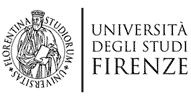Site scale
Investigations aimed at the estimation of the characteristics of future earthquake events are typically carried out in a probabilistic approach based on available knowledge by means of selected statistical assumptions (attenuation models, recurrence laws, occurrence laws and treatment of epistemic uncertainty) with the aim of producing hazard maps for building design standards, optimizing economic and management resources.
Instead, for cultural heritage buildings, the eventuality of collapse or severe damage is intolerable. For these cases, a Deterministic Seismic Hazard Analysis (DSHA) is preferable, (Krinitzsky 1995).
DSHA constitutes the earliest approach considered in seismic hazard analysis, its primal applications was in nuclear power industry and it is normally employed for some significant structures (e.g. large dams and bridges, hazardous waste containment facilities, etc.). Often, DSHA is employed in parallel with PSHA constituting an upper threshold, a cap that offers the most severe scenario analysis. It composes of the following steps:
- (i) Establish location and characteristics of all significant potential earthquake sources that can hit a site and for each of the sources associate the Maximum Credible Earthquake (MCE). The Maximum credible earthquake is modelled on geological evidence and catalogues; more than a MCE for a site is possible.
- (ii) Choose a proper attenuation law to define the ground motion at the site function of source distance, magnitude and soil characteristics
- (iii) Define adequate design tools (acceleration spectra, accelerograms etc.)
The objective of this approach is to design against any possible eventuality, to define shaking levels regardless of time, and the assumption enforced by the method is the impossibility to predict an earthquake with predetermined intensity and recurrence rate in a specified number of years.
By means of DSHA, the worst seismic event ever occurred (Maximum Historical Earthquake Analysis – MHEA) within a seimogenic area is placed at the interest site. In particular, the earthquake intensity for this kind of analysis is expressed in terms of PGA, which substantially depends on two factors: magnitude, representative of the energy released by the earthquake wave at the hypocentre, and the distance between the site of interest and the hypocentre itself.
Thus, the worst seismic scenario for a given site is the one that maximises the magnitude and minimizes the distance, as saying a strong earthquake occurring right under the site of interest. For this kind of analysis, it can be assumed for the magnitude value, the maximum value obtained from the Gutenberg-Richter recurrence law for the seismogenic zone of interest, (Maximum Credible Earthquake Analysis - MCEA), or, more plausibly, the highest magnitude recorded ever (MHEA).
In case a DSHA is employed for a specific site of cultural interest, all the possible active faults and sub-faults need to be parametrised to fill in and possible missing sources, which could have not been considered in a national mapping, of lower potential magnitude, since these sub-faults could have a destructive potential as well.
In addition, specific geophysical investigations at the site need to be carried out, e.g. near-field morphotectoninc characterisation and microtremors. The aim of such investigations is the geomorphological, stratigraphical and mechanical characterisation of the site at hand. In other words, the site response, i.e. the modification law of the expected input from the bedrock to the surface, has to be clearly defined, and this is possible through a deep knowledge of depth and stratigraphy of the soft soil ply over the bedrock. Among the suggested investigations, static and dynamic penetrometer tests (CPT and SPT) are the most relevant since from the results offered, the velocity of the S-waves can be deducted. To gain S-wave velocity also Down-hole, Cross-hole and SASW tests can be carried out. Indeed, the soft soil ply, acting a filter of the input, can induce amplification of acceleration for specific set of frequencies, as well as attenuation for other frequencies that are to be determined when the sensitivity of the building is so high as in the case of cultural heritage.


